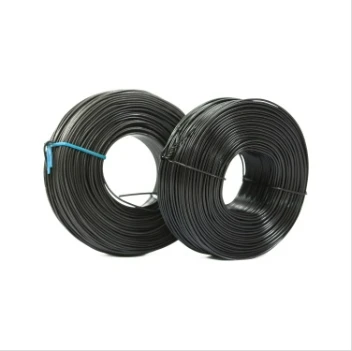Effective Uses of Barbed Wire in Fencing for Enhanced Security and Durability
The Role of Barbed Wire in Fencing
Barbed wire, a type of fencing material that consists of thin steel wire twisted together with sharp barbs at regular intervals, has been a significant element in the construction of fences for over a century. Invented in the 1860s, barbed wire revolutionized agricultural practices and influenced the socio-political landscape of various regions. This article discusses the historical significance, applications, advantages, and modern innovations related to barbed wire fencing.
Historical Background
The invention of barbed wire is credited to Joseph Glidden, who patented his design in 1874. Prior to its introduction, fencing options were limited and often impractical for the vast landscapes of the American West. Traditional wooden fences were expensive, labor-intensive to construct, and challenging to maintain. Barbed wire provided a cost-effective and efficient alternative, allowing farmers and ranchers to enclose their properties effectively and establish boundaries. The widespread use of barbed wire contributed to the transformation of the Great Plains, facilitating the transition from open-range grazing to confined cattle farming.
Applications of Barbed Wire
Barbed wire fencing has numerous applications, making it a versatile choice for various industries. In agriculture, it serves primarily as a means of livestock containment. Cattle, sheep, and other farm animals often find traditional fences inadequate, leading to escapes and potential accidents. Barbed wire adds an additional deterrent, preventing animals from pushing against the fence and escaping.
In addition to agricultural use, barbed wire is widely adopted in military and security applications. Its sharp barbs serve both as a physical barrier and a psychological deterrent against intruders. Military installations, correctional facilities, and private properties often utilize barbed wire to safeguard sensitive areas. The presence of barbed wire sends a clear message unauthorized entry could result in injury, thereby reinforcing the perimeter of secure zones.
Advantages of Barbed Wire Fencing
barbed wire for fencing

One of the primary advantages of barbed wire fencing is its cost-effectiveness. Compared to traditional fencing materials such as wood or vinyl, barbed wire is relatively inexpensive to purchase and install. This affordability makes it an attractive option for farmers and property owners looking to establish boundaries without breaking the bank.
Additionally, barbed wire is incredibly durable and low-maintenance. Once installed, it can withstand harsh weather conditions and requires minimal upkeep over the years. Unlike wooden fences that may rot, warp, or become infested with pests, barbed wire is less susceptible to environmental degradation. This longevity ensures that property owners can rely on their investment for years to come.
Barbed wire also allows for greater flexibility in fencing design. It can be easily modified to accommodate varying terrain or specific security needs. Whether it's a straight line across flat land or a complex layout through uneven ground, barbed wire can adapt and provide effective enclosure.
Modern Innovations
In recent years, advances in technology have led to innovations in barbed wire production and installation. Some manufacturers have developed barbed wire with added features, such as enhanced corrosion resistance through galvanization or vinyl coating, which not only protects the wire but can also improve aesthetic appeal.
Moreover, the integration of barbed wire with modern security systems has enhanced its effectiveness. For instance, some facilities combine barbed wire with electronic surveillance systems, alarms, and motion detectors to create a multi-layered security approach. This synergy of traditional fencing methods and contemporary technology provides property owners with a more comprehensive defense against potential threats.
Conclusion
Barbed wire is more than just a practical fencing solution; it embodies a significant historical and cultural evolution in land management and security. Its effectiveness, durability, and adaptability have made it a staple in agriculture and security applications. As innovations continue to emerge, the relevance of barbed wire fencing remains strong, proving that this humble invention still holds great value in our modern world. Whether for agricultural purposes, security measures, or simply marking property boundaries, barbed wire continues to serve as a crucial tool for safeguarding land and livestock.
-
Types and Uses of Common Nails in Construction
NewsJul.31,2025
-
The Transformative Role of Square Wire Mesh in Contemporary Architecture
NewsJul.31,2025
-
The Essential Role of Razor Wire in Modern Perimeter Security
NewsJul.31,2025
-
Installation Guide for Hexagonal Wire Netting Fencing
NewsJul.31,2025
-
How to Properly Use Rebar Wire Ties for Stronger Concrete Structures
NewsJul.31,2025
-
Creative and Decorative Uses of Barbed Wire in Design
NewsJul.31,2025














